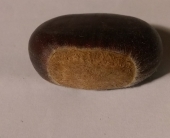


Mike Barkley wrote:
In Corsica for many years the ruler required everyone to plant four trees a year, an olive, a mulberry, a fig, and a chestnut.
I like they way they thought.
I'm in. It so happens some beautiful old chestnut trees are dying on this property. No problem replacing them & several times more. Have been working on figs too. Trying to get a more winter hardy version thriving. Have to pass on olives. Will plant apples & other fruit that will do better. Mulberry? Maybe. Have elderberry, and wild blackberry & raspberry going now. A few other random berries. Not sure how mulberry would do here. It's been on the radar though.
Not exactly a new idea but a suitable modification of an old one. The Appalachian Trail has trail angels. Good hearted folks who suddenly appear along the trail. They provide drinks, food, & a helpful hand for weary hikers. If there was a large supply of young trees available something like that could happen in local parks & recreation areas. Seems like the users of those places would be most likely to plant a free tree.
If you want to find a source for young trees at an affordable price, Cold Stream Farms, sells bare root trees with the price depending on size and quantity. Buying more reduces the price. One example, a single 6"-12" tree costs $4.57, but buying 4 of them brings the price down to $2.76 each. Buy 25 trees and the price is $1.21 each. Other sizes available, price reductions for lots of 100 and 500+. It's cheaper to buy 100 than 65, or to buy 25 trees than 12, make a commitment for 500. I plan to order 25 trees, plant 8 in the ground and raise the other 15 in pots with the plan to give them as Easter gifts in 2020.

Heather Ward wrote:I love to forage, but this year I've kept track of what I ate and preserved and noticed that dock, lambs-quarters, and amaranth are my big three, the ones that put food on the table consistently and without fail and fill my freezer too. So I am asking, not what all you forage, but what do you forage A LOT and consider a staple of your diet? Do share!

Dillon Nichols wrote:I've eaten them thrown into an omelet or quiche.
The simple way is to think of them as a spinach substitute. For obvious reasons it's advisable to stick to dishes that that will be cooked, or that use cooked spinach. I've also heard that they can substitute for kale.